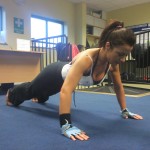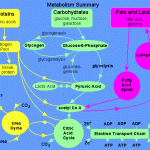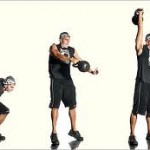Welcome back!
If you’re a regular reader of this blog then it’s a sure bet that you are either looking to take back control of your body or are at least pursuing a leaner, more toned body.
It also means that you know that I believe that reconditioning or at least elevating your metabolism is the keyto achieving this.
There are many definitions of metabolism the one I like is: “Metabolism is the set of chemical reactions that happen in living organisms to sustain life.”
However if you are carrying too much body fat, or want to develop more muscle and become stronger and fitter, not to mention healthier – then simply sustaining life isn’t the goal to aim for. Just surviving shouldn’t be your standard. Changing how you look & feel, what you eat, how (& how often) you move basically moving past mere survival towards thriving, growing, exceeding, and surpassing – this is a worthy goal.
It is in fact a life goal.
Becoming fitter & leaner is as simple (& as complex) as the fact that the higher level your metabolism functions, the better become your results as far as fat loss and maintaining a slim, trim body. Notice I didn’t say the more efficient your metabolism becomes…(although it will of course do so)…in many ways we want our metabolism to stay somewhat irregular because once your body become efficient at anything homeostasis sets in and your body fights against change…
It is better to think in terms of elevating your metabolism by manipulating the components of it that we can exert influence over. Of course once you’ve achieved your desired fat loss / lean body then keep doing what got you there and create a new metabolic set point – this way you co-opt your body’s desire for homeostasis to work for your goal, not against it…
So let’s revisit some of the strategies that you can utilise to make your metabolism work at a higher rate for you…
Human metabolism can be broadly broken down into two parts: catabolism and anabolism. Catabolism is concerned with tearing things down – it is the burning of calories, the digestion of food, the breaking down of body tissues for energy or as a precursor to rebuilding (think sore muscles after a hard work out – for the sake of simplicity the muscle soreness you feel is associated with catabolic processes). It is essential the processes whereby your body fuels your cells with energy by breaking down available fuel sources.
Without the catabolic part of metabolism we would not have the energy to provide the energy to our muscles that is needed to stand, sit, move, breathe and generally create movement. It is often talked about in a negative sense but without catabolism we would just be inert sacks of chemicals & minerals.
The other side of this simplified metabolic coin is Anabolism. The anabolic side of the equation is the building part of our metabolism. Cell repair, muscle, hair, & nail growth are all anabolic processes. Basically anabolism takes energy and uses it to link / bind chemical compounds together to make larger molecules & cells.
In order to use these processes in your quest to become less fat, stronger & healthier you need to maximise both of them. For catabolism this means challenging, regular exercise that causes your muscles & other energy pathways to burn fuel like fat, carbohydrates, and sugars. For anabolism it too means challenging exercise coupled with protein and nutrient rich foods. The more intensely that you
train the more your metabolism elevates and more opportunities your body gains to shed fat and gain lean mass.
As we’ve seen intense training is not long duration training and more importantly training that uses protocols like Tabatas or HIIT tend to work a lot of muscles – and this is important for overall fitness, well being and fat loss.
Muscles are the furnaces that burn fat in your body. Muscles are numerous and together they have 2 general roles to play – mobility & stability. You know by now my preference for whole body workouts that use compound movements. Compound movements are important because they not only use the large muscles but they also activate and exercise the stabilising muscles. Stabilising muscles are an often overlooked component of movement & fat loss.
The larger muscles (think quadriceps, deltoids, pecs & lats) are called ‘prime movers’ and allow your body to move with what is called ‘Dynamic Mobility’– which is another way of saying through a full range of motion.
The stabilising muscles tend to be smaller, less obvious (even when developed) and lie deeper in the body & closer to the joints. Their role is to do as their name suggests – to stabilise. Stabiliser muscles like your shoulders rotator cuff, like your deep abdominals, like your infraspinitus and spinal multifidi all work to keep our bodies ‘together’ whilst it moves. Whether walking, pitching a ball, skiing a slope or sitting in a meal these muscles stop the actions of the prime movers from pulling us apart as we move dynamically. They are in use all of the time and as such are major (but oft times unsung) users of energy.
Working both types of muscles is important for another reason – if the Prime Movers become too strong &
overwhelm the stabilising muscles then we begin to collect injuries – often chronic ones. Or if the stabilisers become weak then the Prime Movers have to pull ‘double duty’ and act not just as movers but also as stabilisers. This type of overload can lead to joint dysfunction and pain. Note I mean pain, not the soreness that accompanies a good workout, but deep lasting hurt!
Pain is read by your body as a source of stress and causes it to release stress hormones like cortisol which not only blunts anabolic metabolism but also directs fat storage to the belly area.
Chronic muscle imbalance = Pain = more belly fat.
So in order to avoid this you’ve got to move often, move intensely, & move well. This means using compound movements (think Olympic style lifts) with activities like sprinting and walking.
To get the most out of your metabolism, both in terms of catabolism & anabolism your training should involve training intensely in a way that is without pain. Chronic Pain will constantly undermine the effectiveness of your workouts and pull your metabolic levels down.
See you next week.




